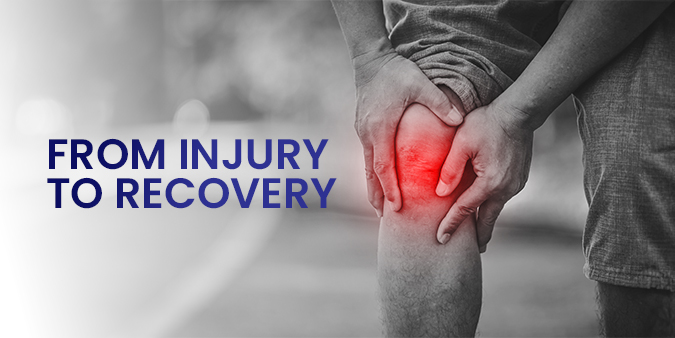
From Injury to Recovery: The Journey of ACL Tear Surgery
Wednesday, 22nd May 2024An ACL tear can be a devastating injury, particularly for athletes and active individuals. The anterior cruciate ligament (ACL) is crucial for knee stability, and a tear often requires surgical intervention followed by a rigorous recovery process. This article outlines the journey from injury to recovery, providing a detailed guide to ACL tear surgery, what to expect, and tips for a successful rehabilitation.
Understanding the ACL and Its Importance
The anterior cruciate ligament (ACL) is one of the key ligaments in your knee joint. It connects the thigh bone (femur) to the shin bone (tibia) and helps stabilize the knee during movement. An ACL tear can result from sudden stops, changes in direction, or direct impact to the knee, common in sports like soccer, basketball, and skiing.
Symptoms of an ACL Tear
Common symptoms of an ACL tear include:
- A loud pop or a "popping" sensation in the knee
- Severe pain and inability to continue activity
- Swelling within a few hours of the injury
- Loss of range of motion
- Instability or "giving way" of the knee
Diagnosis of an ACL Tear
To diagnose an ACL tear, your doctor will perform a physical examination and may order imaging tests such as:
- MRI: Provides detailed images of soft tissues, including ligaments.
- X-ray: While it won't show the ACL, it can rule out bone fractures.
- Arthroscopy: In some cases, a small camera inserted into the knee can provide a clear view of the injury.
Initial Treatment: Pre-Surgery Care
Before surgery, initial treatment focuses on reducing pain and swelling, and restoring knee movement. This can include:
- Rest and Ice: Resting and applying ice packs can reduce swelling and pain.
- Compression and Elevation: Using an elastic bandage and elevating the leg helps control swelling.
- Physical Therapy: Exercises to improve range of motion and strengthen the muscles around the knee.
ACL Tear Surgery: What to Expect
Types of ACL Surgery
There are two main types of ACL surgery:
- Autograft: Uses a tendon from another part of your body, such as the patellar tendon or hamstring tendon.
- Allograft: Uses a tendon from a deceased donor.
The Surgical Procedure
The ACL reconstruction surgery typically involves the following steps:
- Preparation: The patient is given anesthesia, and the knee is sterilized.
- Graft Harvesting: If using an autograft, the surgeon will harvest the tendon from the patient's body.
- Arthroscopy: Small incisions are made, and an arthroscope (a small camera) is inserted to guide the surgery.
- Graft Placement: The surgeon removes the torn ACL and drills tunnels in the femur and tibia to place the new graft.
- Fixation: The graft is secured with screws or other fixation devices.
- Closure: The incisions are closed with sutures or staples, and the knee is bandaged.
Post-Surgery Recovery: The First Few Weeks
Immediate Post-Surgery Care
- Pain Management: Pain medications and anti-inflammatory drugs help manage pain and swelling.
- Ice and Elevation: Continuing to ice the knee and keep it elevated reduces swelling.
- Use of Crutches: You'll need crutches to avoid putting weight on the knee.
Rehabilitation and Physical Therapy
Rehabilitation is crucial for a successful recovery. It typically involves:
- Range of Motion Exercises: Early exercises focus on regaining knee movement.
- Strengthening Exercises: Gradual strengthening of the quadriceps, hamstrings, and other muscles around the knee.
- Functional Training: Later stages include exercises to restore agility, balance, and coordination.
Long-Term Recovery and Returning to Activity
Milestones in Recovery
- First 3 Months: Focus on reducing swelling, regaining full range of motion, and strengthening the knee.
- 3 to 6 Months: Increased focus on strengthening and functional training, preparing for a return to low-impact activities.
- 6 to 12 Months: Gradual return to high-impact activities and sports, depending on individual progress and doctor's advice.
Tips for a Successful Recovery
Follow Your Rehab Plan: Adherence to your physical therapy regimen is crucial for optimal recovery. Listen to Your Body: Avoid pushing through pain, as this can lead to setbacks. Stay Positive and Patient: Recovery can be lengthy and challenging, but maintaining a positive attitude and being patient is essential.
Conclusion
Recovering from an ACL tear and surgery is a journey that requires time, dedication, and the right support. By understanding the process from injury to recovery, you can better prepare yourself for the challenges and milestones ahead. With proper care, rehabilitation, and a positive mindset, many individuals successfully return to their pre-injury levels of activity, enjoying a full and active life once again


